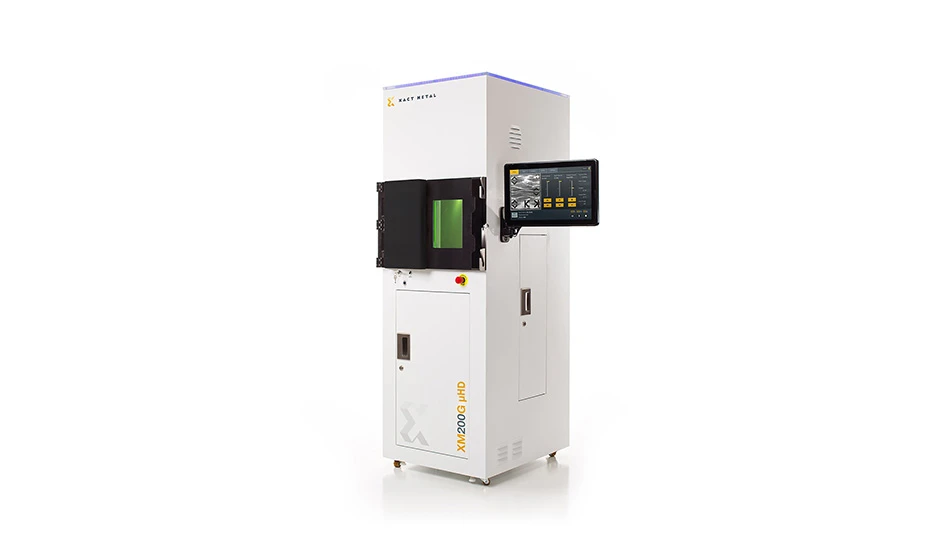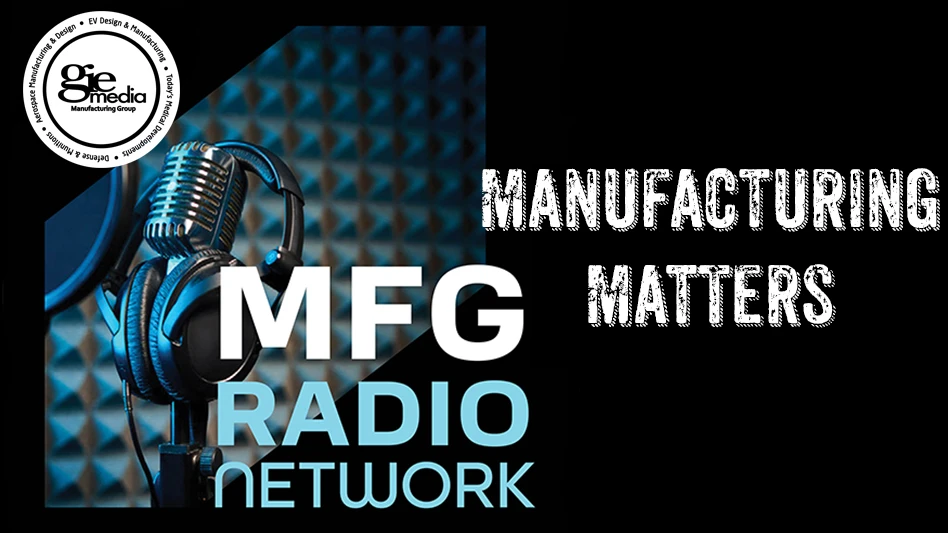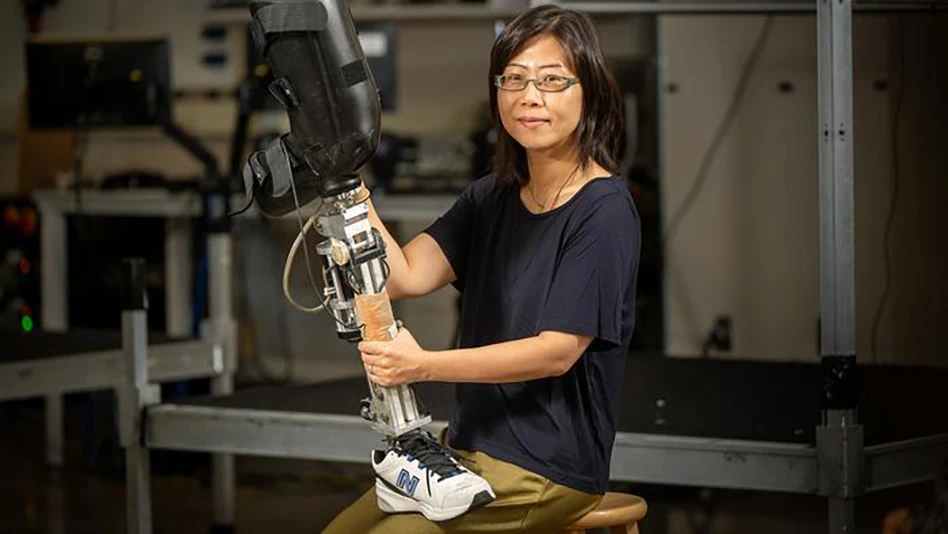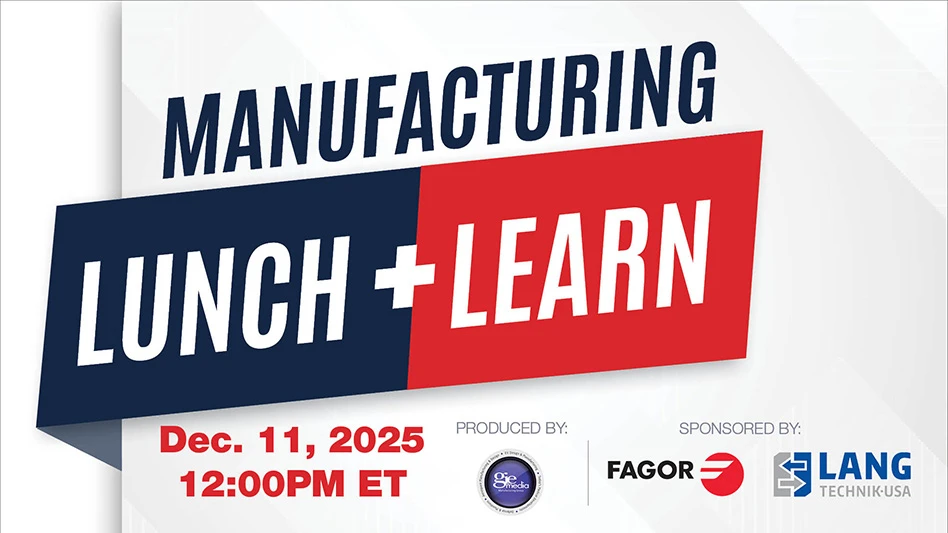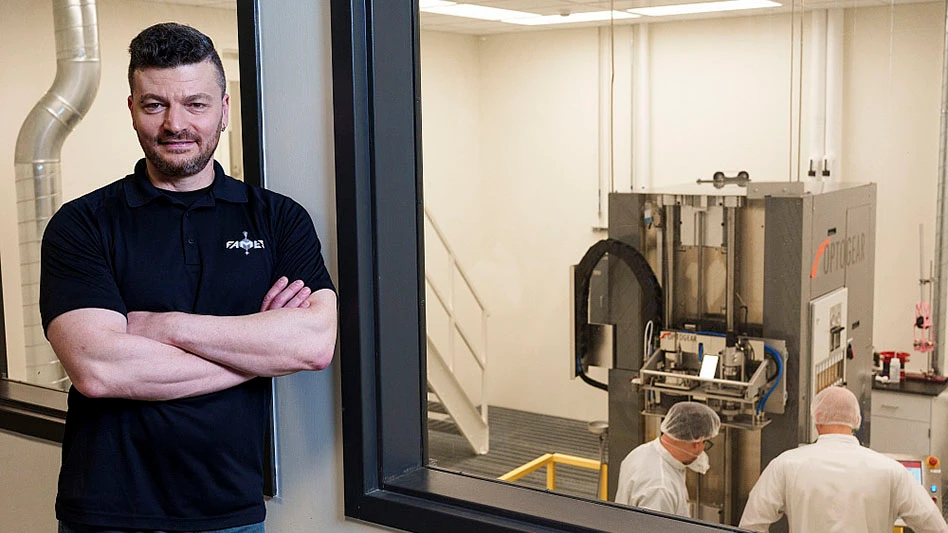
OAR Moldworks is, in many ways, a family company. Oswald Rosenholm started the business in 1966 as OAR Tool & Die, after studying hub and die cutting for nine years at the Rhode Island School of Design. In the early days, Rosenholm did a lot of figurine work with a hammer, a chisel and a file. Building a solid foundation and a successful business, Rosenholm brought his son Andy on board as President of OAR in 1993. In 1995, OAR Tool & Die changed its name to OAR Moldworks.
Today, OAR is an ISO 9001 certified facility that does prototyping and production of plastic and machined parts, assembly, medical device manufacturing, packaging, and FDA regulatory consulting. The 20,000ft2 facility hosts 43 employees, including many workers who are husband and wife, father and son, or brother and sister.
A Strong Foundation
Keeping it "in the family" is a form of screening process, says Andy Rosenholm. "It keeps everybody honest, when your father is here working with you," he admits.
A strong workforce is necessary when your company goes through changes as vast and as rapidly as OAR Moldworks. Though the manufacturing industry is feeling a pinch with the shortage of skilled workers, Rosenholm says OAR is doing quite well in that area.
"We're fortunate to have done very well with that," he says. "I get people with good work habits and then I train them to do what I need them to do, rather than trying to hire people who know what we're doing, but learned it the wrong way."
OAR has Rhode Island's only moldmakers apprenticeship program. Currently, it has only one apprentice, whose father has been with the company for 15 years.
OAR also employs about 50% women workers. Rosenholm in part credits women's patience and dexterity during work under microscopes for OAR's smooth transition from a moldmaking shop to a medical device manufacturing facility.
Change of Face
After September 11, 2001, the United States manufacturing sector, along with many other economic divisions, took a hit. The bottom had pretty much dropped out of the machining market. In the ensuing years, Rosenholm took two trips to China to purchase injection molds.
"While I was in China, I was blown away. Their technology and quality just floored me," Rosenholm recalls. "While I was flying home, I rewrote our business plan. I came back and announced to everybody that we needed to get into a new business. I said I saw the future, and we were not included in it."
Not long after, in a stroke of luck, OAR landed a big break in the medical device market. "We had a good job handed to us that really picked up the ball and we bet the farm on it," Rosenholm says. "And, we succeeded, and today that's 75% to 80% of what we do."
OAR is still in the tool and die industry, but now it accounts for only about 10% of their business. Although the company has changed its direction, they have retained their employees and even added more in the process.
"We haven't gotten rid of any tool makers, just converted them into other positions," Rosenholm explains. "We still build injection molds, primarily medical, but the bulk of what we do now is machining of medical devices and some power generation components as well."
The medical device industry poses some hefty challenges for manufacturers and job shops. Most companies are now required to be ISO 9001 certified – a process that takes a lot of time and paperwork. In addition, the extremely tight tolerances required for precision medical parts pose potential problems for manufacturers. New equipment or frequentlyrebuilt equipment is virtually necessary to hold these tolerances, according to Rosenholm. With the proper investment in good machines, a huge change in terms of record retention and record keeping, and after a full 10 years of preparation and hard work, OAR was awarded ISO 9001 certification in December 2007.
Partner in Perfection
Six years ago, Haas Automation, Inc. stepped onto the scene at OAR Moldworks. Rosenholm explains that other companies don't offer the kind of service and reliability that Haas offers him.
"When I call them and say I need one, two or three machines, they've generally got access," Rosenholm says. "The machines are either in stock or Haas can get them in a week or two. Comparing that to a European or Asian machine, you're always told it's in a container, or it's in California. And when we need service, Haas is here that day or the following day."

Haas SL10 lathe
Currently, OAR utilizes five Super Mini Mills and two SL10 lathes from Haas. Working with materials such as stainless steel, titanium, inconel and silicone to create parts as exotic as hernia fixation instrumentation and cranial hydrocephalus drains, OAR is dependent on reliable mills and lathes to get the jobs done quickly and accurately.
"We run two shifts, seven days per week," Rosenholm says. "If a machine is down for a week, I'm out 10 to 20 grand, so downtime is extraordinarily expensive. I need to know that someone is going to be here the following day to fix it."
As an example of the kind of precision OAR works with every day, the silicone cranial hydrocephalus drain is about as complex as its name. With hydrocephalus in the brain, the fluid surrounding the organ increases to a level that places too much pressure on the brain, leading to head swelling and/or death. The device is actually a drain to release the excess fluid from the head. The device has 32 incremental drainage levels, like a step gear in the head. The device has a magnetic stepper motor, and the drainage level can be adjusted from outside, with the device sealed in the skin. From learning to mold silicone at the beginning, to inspecting the finished part, it was and is the most challenging part that OAR produces.
OAR also works on bio-dissolvable bone screws, spinal fixation instrumentation, screws to hold plates in the back, and many other devices that are required to be exact and precise. With the help of Haas machinery, OAR has prospered in its quest for perfection.
"We grew 220% in 2007," Rosenholm says. "Over the years, I've had customers hand me a huge job that I'd need three to five machines for, and they need the parts in a month. Before we were working closely with Haas, I had to walk away from jobs like that. With Haas, they were able to accommodate our needs for machinery, and they would have people here setting it up the same day the machine arrived. You could almost say they have machinery and service on demand."
OAR Moldworks is now supplying customers such as Codman, CR Bard, Smith & Nephew, IST Spine, Covidian and many startup companies. They have the ability to machine hardened tool steel directly without roughing, excelling in close-tolerance "hard machining" for the medical device industry. Through the hard work, family atmosphere, and use of Haas machines on their shop floor, OAR has grown exponentially in the last several years of business, and is still in the process of expanding.

Explore the March 2008 Issue
Check out more from this issue and find your next story to read.
Latest from Today's Medical Developments
- GrindingHub Americas launches in 2027 in Cincinnati, Ohio
- Methods Machine Tools now offers the Nakamura-Tome NT-Flex
- Battelle awards $900,000 in STEM education grants to Ohio schools
- #55 Lunch + Learn Podcast with KINEXON
- Starrett and Gerstner offer limited edition, American made 1950s replica wooden machinist tool chests
- EMCO’s UNIVERSALTURN 50: The new benchmark in universal turning
- Archetype's Expertise for Equity accelerates early-stage innovation
- Stratasys expands its AM solutions with Tritone's cutting-edge technology
